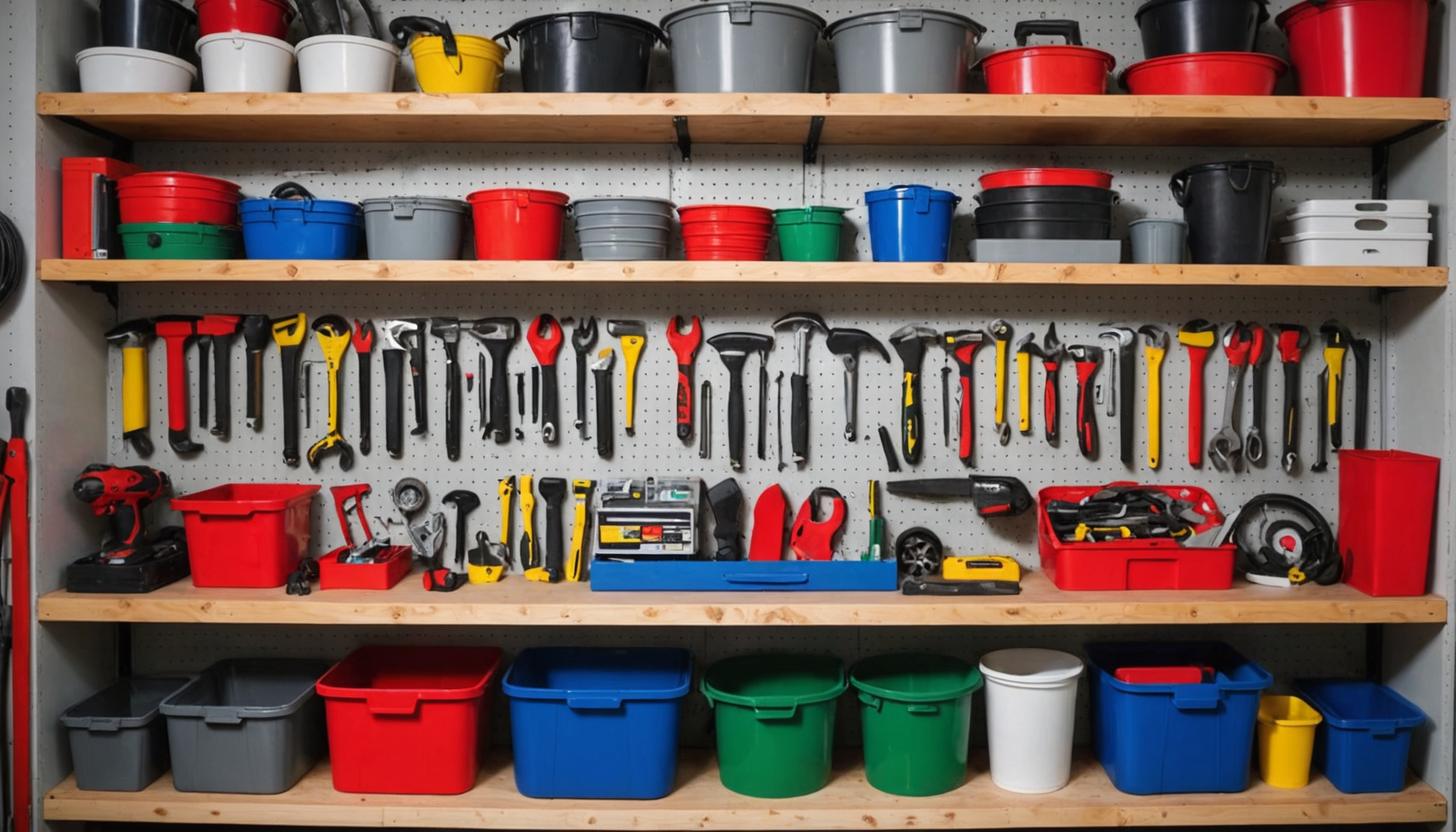When setting out to organize your garage, one of the most crucial first steps involves thoroughly assessing your storage needs. This foundational phase enables you to understand what space is available and how best to utilize it, ensuring long-term success and efficiency. Whether your garage serves as a multifunctional space accommodating vehicles, tools, sports equipment, or seasonal decorations, the goal is to create an organized environment tailored to meet your family’s lifestyle and requirements.
Begin by taking stock of the items currently stored in your garage. It’s essential to make an inventory list, categorizing objects into groups such as automotive supplies, gardening equipment, sporting goods, and household items. This systematic approach not only makes it easier to visualize the space utilization but also reveals duplicates or rarely used items that may be candidates for relocation or disposal.
With a clearer picture of what you need to store, consider the following factors to further define your storage needs:
- Frequency of Use: Items that are used frequently should be placed in easily accessible locations. Conversely, seasonal decorations or equipment used less often can be stored in more remote areas.
- Volume and Size: Bulky items might require specific storage solutions like heavy-duty shelving or hanging racks, while smaller, delicate items could benefit from closed cabinets or drawers.
- Future Acquisitions: Anticipate future purchases or additions to your family’s equipment so that your storage solutions accommodate potential growth without necessitating a major overhaul.
Deciding on how to allocate storage space also involves understanding the garage’s physical constraints. Assess the dimensions and condition of your garage, noting any obstructions such as protruding pipes, low ceilings, or uneven walls that might impact storage configuration. It’s also practical to consider enhancing existing space by building vertically rather than expanding to your garage’s floor area, leaving room for vehicles or open workspaces.
| Factor | Consideration |
| Available Space | Measure dimensions, account for existing structures |
| Frequency of Use | Prioritize accessibility for frequently used items |
| Volume and Size | Choose appropriate storage systems for different item sizes |
| Future Needs | Plan for future acquisitions or changes in storage requirements |
If the task of assessing your storage needs seems daunting, consider hiring pros who specialize in garage organization. Professionals can offer valuable insights into optimal layouts, creative storage solutions, and even energy-efficient lighting modifications. With extensive experience, they can identify opportunities to leverage underused spaces, such as attics or the area above the garage’s roofing, turning potential dead zones into practical storage spots.
Ultimately, a successful garage organization strategy stems from a nuanced understanding of your storage needs. By investing time in this initial phase, you lay the groundwork for a laudable domain—capable of evolving with your family’s dynamics—enhancing daily convenience and contributing to an orderly, harmonious home environment.
Sorting and decluttering
Once you have a clear understanding of your garage’s storage needs, the next step is to focus on sorting and decluttering to pave the way for an efficient organization setup. This process helps you identify what truly needs to be kept, what can be discarded, and what might find better use elsewhere. Here’s a step-by-step guide to help you navigate through this stage successfully:
1. Set Aside Adequate Time: Allocate sufficient time for this task, ideally a full day or weekend, depending on the size of your garage and the amount of accumulated items. It’s crucial not to rush the process.
2. Categorize Items: Start by sorting all your items into broad categories. Some common categories include automotive supplies, gardening tools, sports equipment, holiday decorations, and household items. Categorizing helps you visualize how much space each group of items requires, aiding efficient organization later on.
3. Evaluate Each Category: Within each category, reassess the items, asking yourself the following questions:
– When was the last time you used it? If it has been more than a year, consider if it’s worth keeping.
– Does it still function well and serve its purpose? If not, it’s probably time to dispose of or recycle it.
– Is it a duplicate? Sometimes, we accumulate similar items, so decide if having multiples is necessary.
4. Make Decisions: For each item in your categories, decide whether to keep, donate, recycle, or dispose of it.
– Keep: Only retain items that are functional, needed, and align with your family’s lifestyle.
– Donate: Items that are still in good condition but no longer serve your requirements could benefit someone else. Consider local charities or community groups.
– Recycle: Properly recycle items that are no longer usable but can be processed for materials.
– Dispose: Responsibly discard items that can’t be reused or recycled, following local waste disposal guidelines.
5. Create a Staging Area: Set up a temporary space, either in your driveway or an unused portion of your garage, to gather items designated for donation, recycling, or disposal. This helps you keep track of outflow and prevents clutter during the sorting phase.
6. Tackle One Area at a Time: It might be tempting to sort all at once, but it’s more effective to approach one section of the garage at a time. This method keeps the task manageable and prevents feeling overwhelmed.
7. Involve the Family: Make this a family activity, as different members might have input on what to keep or let go. Engaging everyone ensures the space meets the collective needs of the household, fostering a sense of ownership and responsibility.
8. Consider Seasonal Rotations: For seasonal items, evaluate if they can be stored elsewhere or rotated out when not in use. This can prevent seldom-used items from occupying prime garage real estate year-round.
By the end of this process, your garage should be significantly decluttered, with a clear understanding of what needs to be organized. This not only makes the next steps in garage organization smoother but also creates an open, inviting environment where each family member can easily find what they need. Remember, maintaining a decluttered space is an ongoing effort, so establish a regular schedule to reassess and tidy up, preventing the accumulation of unnecessary items in the future.
Maximizing vertical space
When considering how to effectively organize your garage, maximizing vertical space is a crucial strategy that often yields impressive results. Instead of spending valuable floor space, think beyond the ground and start leveraging your walls and ceiling. This shift not only allows you to fit more items but also significantly enhances the accessibility and visibility of what you own, contributing to a more efficient and enjoyable workspace.
One of the first steps is to identify empty vertical areas that can be transformed into storage goldmines. Start by installing sturdy shelves along your garage walls, making use of every inch between the floor and ceiling. Shelving systems come in various materials and sizes, allowing you to customize your shelving to suit specific storage needs. This can be particularly beneficial for storing uniformly-sized containers filled with tools or sporting equipment, where easy accessibility is needed without compromising space.
Wall-mounted racks and pegboards are also fantastic vertical storage solutions that help in keeping frequently used items at arm’s reach. For tools, a well-organized pegboard allows you to hang everything from hammers to paintbrushes, providing a visible catalogue of your equipment. This not only keeps your tools in top condition by protecting them from the dangers of a cluttered workbench, but also makes it easier for the entire family to find and return items after use.
Moreover, don’t overlook the potential of ceiling space. Installing overhead storage racks creates an ideal spot for seasonal items like holiday decorations, or bulky, seldom-used items such as camping gear. These overhead systems should be securely mounted to support substantial weight, ensuring safety and longevity. Make sure that items stored above aren’t needed frequently, as accessing these areas is generally more cumbersome. Ceiling space can be especially advantageous in garages with high roofing, as it utilizes an often-underutilized area without interfering with everyday activities.
For those with creative inclinations, consider bespoke storage solutions like customized cabinets or modular shelving units that can adapt as your storage needs evolve. These solutions can be particularly useful for storing chemicals or other hazardous materials away from children’s reach while keeping the garage looking tidy and organized.
In some cases, the task of maximizing vertical space may seem daunting or too time-consuming to tackle alone. Hiring pros with expertise in garage organization and storage optimization can be a worthwhile investment. Not only do they bring experience in selecting the best products and configurations for your specific space, but they also ensure that every tool, piece of equipment, or storage container has a rightful place.
By focusing on vertical space, you create an organized garage that not only smartly utilizes available storage but also frees up precious floor room for vehicles or designated work areas. This strategic organization enhances the functionality of the entire space, turning your garage into a more productive and welcoming environment for the whole family.
Choosing the right storage solutions
Once you’ve identified the best ways to use your wall and ceiling space, the next critical step in transforming your garage involves selecting the appropriate storage solutions to fit your needs. This decision can significantly affect the functionality and aesthetics of your space, so it’s important to choose wisely to ensure your garage is optimized for both convenience and efficiency.
Start by considering the type of items you need to store. Use heavy-duty shelving for bulkier items such as power tools, large boxes, or equipment. Metal or solid resin shelves are ideal for supporting heavier weights, and adjustable units allow for flexibility as your storage needs evolve. If you have many small items, consider options like drawer systems or stackable bins. Clear storage bins are especially useful as they let you see what’s inside without needing to open each one, saving time and reducing clutter.
For those frequently used items, opt for wall-mounted racks and hooks. These are perfect for hanging bicycles, ladders, or sporting equipment, keeping them off the floor and within easy reach. By installing these on the walls, you reduce the likelihood of accidents and wear over time, while maintaining a tidy, organized space.
If your garage serves as a workshop or hobby area, a sturdy workbench with integrated storage can be invaluable. Look for designs featuring cabinets or shelves beneath, offering ample room for tools, hardware, and supplies, all neatly organized and ready for your project needs. Some benches come with modular components, which can be rearranged or expanded upon, providing a versatile solution to growing storage requirements.
Cordial consideration also extends to choosing the right enclosures for sensitive or hazardous materials. Lockable cabinets are a must for any household with children, storing chemicals, paints, or sharp tools safely out of reach. For garages that double as laundry areas or gym spaces, consider cabinets with moisture-resistant properties to ensure durability and safety.
For those who feel overwhelmed by the choices or complexity of organizing their garage space, hiring pros can be a straightforward solution. Experts in garage organization not only bring ideas and products to the table that you might not have considered, but they also have the practical experience to implement solutions efficiently and effectively. This investment can save time and frustration in the long run, transforming your garage into a well-organized space tailored to your family’s needs.
Finally, as you choose storage solutions, remember to leave room for creativity and personalization. Family members can contribute ideas for labeling systems or color-coding bins, making it easier to find items and reducing the chances of misplacing essential tools or equipment. By selecting the right storage solutions, you lay the groundwork for a space that’s not only functional and organized but also welcoming and adaptable to changing needs.
In harnessing the power of the right storage solutions, your garage not only becomes a place to park vehicles and store items, it transforms into an efficient, well-ordered extension of your home, contributing to a seamless and productive domestic experience.
Maintaining an organized garage
An organized garage is not merely the result of a one-time effort but rather an outcome of consistent maintenance and attentive adjustments. Once the initial setup is complete, it’s crucial to establish a routine for keeping the space tidy and functional over time. One way to maintain organization is to schedule regular cleaning and tidying sessions. Just dedicating a short time each month to reassessing the items stored in your garage can prevent unwanted clutter from building up, making it easier to spot any necessary adjustments in your storage system.
Incorporate a simple process of returning items to their designated places after use. This practice, although seemingly minor, can significantly cut down on future clutter and makes everything more accessible when needed. It’s helpful to involve the entire family in this routine, assigning responsibility for specific areas or items to ensure everyone contributes to maintaining the neatness of the garage. This not only distributes the workload but also fosters a sense of shared ownership that encourages everyone to appreciate and sustain the organized environment.
Over time, your family’s needs and the contents of your garage may evolve. Be ready to adapt your storage solutions to accommodate new items, seasonal shifts, or changes in how the garage is used. This might require occasionally reassessing what is stored and adjusting storage solutions to meet current demands. A flexible system with adjustable shelving or modular storage units can ease these transitions, allowing for quick reconfiguration without major overhauls.
Another vital aspect of maintaining an organized garage is regular inspection of storage systems for wear and tear. Ensure that shelving, racks, and overhead storage are properly anchored and that their integrity is not compromised by the weight of stored items. Safety must always be a priority, ensuring that all storage solutions remain secure and capable of performing their function efficiently. If you ever feel the need for expert advice or assistance with adjustments, hiring pros skilled in garage organization and maintenance can provide valuable insights and peace of mind.
Adding labels or a digital inventory system can help track where specific items are located, simplifying the process of finding and returning things as needed. This approach minimizes frustration and makes the entire system even more user-friendly, especially when everyone in the family is involved in utilizing the garage space.
By establishing these habits and strategies, you lay the groundwork for a functional and aesthetically pleasing garage that serves as a practical extension of your home. An organized garage not only contributes to a clutter-free home, but it also adds to the overall efficiency and harmony of your living space, making daily tasks easier and more enjoyable.
In conclusion, organizing and maintaining a garage requires thoughtful planning and consistent effort, but the rewards of a clutter-free, functional space are well worth it. By assessing your storage needs, decluttering, maximizing vertical space, and choosing suitable storage solutions, you create a garage that enhances your daily life. With regular maintenance, this space can evolve with your family’s changing requirements, serving as a model of efficiency and order.


